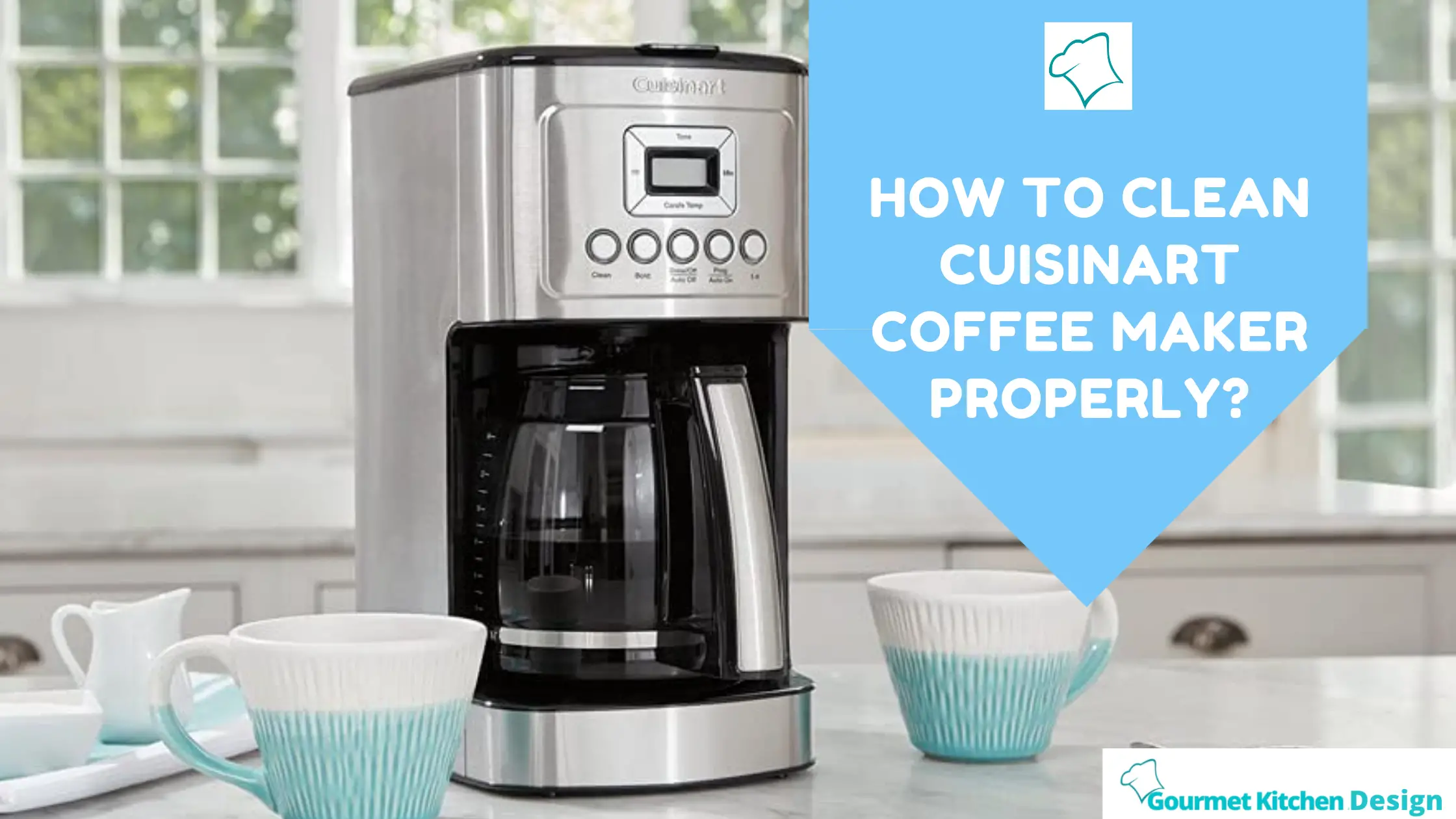Do you know how to identify a dirty coffee maker? It would be best if you cleaned your coffee maker regularly. Let’s discuss how to clean a Cuisinart coffee maker properly.
Starting the day off right with a nice cup of coffee and your favorite breakfast, such as an omelette, is key to a good morning.
There’s no way to avoid mineral buildup in your coffee maker, whether you use bottled water, filtered water, or tap water. That means you need a thorough cleaning to extend the life of your beloved Cuisinart coffee maker.
If you’re a coffee-lover, the last thing you want is coffee that doesn’t taste good. It’s time for you to learn how to care for your coffee machine!
Why Do Coffee Maker Gets Dirty?

If you’re a coffee drinker, you’re probably going to the kitchen several times a day to get your dose. But have you considered how filthy your home or office coffee maker might become after so many uses?
Avoid the spread of bacteria, yeast, or even mold by maintaining these appliances clean. According to Lisa Yakas, senior product manager of Consumer Products at NSF International, formerly known as the National Sanitation Foundation, these appliances are mainly harmless, as long as the people follow the manufacturer’s cleaning instructions.
What causes a coffee maker to become dirty? Coffee contains oils, which can cause an oily residue to form in coffee pots, brew baskets, and showerheads.
Coffee contains oils, which can cause an oily residue to form in coffee pots, brew baskets, and showerheads.
Also, water contains minerals that cling to the machine’s parts and accumulate water crystals over time, causing scaling. Coffee’s brown color can leave stains on your coffee pot’s glass or the machine’s exterior.
What Happens If You Don’t Clean Your Coffee Maker?

The internal thermometer in a dirty coffee maker may not work correctly. It will not extract the flavor of the coffee if the water temperature is not high enough. Even if you spend more on premium coffee beans, you’ll end up with coffee that doesn’t taste as great.
The constant water flowing through your coffee maker to brew your coffee might build internal parts. Mineral scaling, such as calcium and lime, will limit the normal function of your machine’s parts.
According to a 2011 NSF study, the coffee buildup can make your cup taste bitter or worse. There could be yeast and mold hiding in the reservoir. While yeast and mold don’t have a major impact on your health on a small scale, they can cause allergic reactions in certain people.
Make sure to clean your coffee maker regularly to avoid the spread of bacteria.
Check out the video below!
Easiest Steps to Clean Your Cuisinart Coffee Maker
Step 1: Empty the coffee maker.
Pull out the pot and the filter basket when you’re ready to clean that machine that wakes you up every morning.
Step 2: Make a mixture of vinegar and water.
Fill the reservoir with one part vinegar to two parts water. Fill the pot with eight cups of water and four cups of vinegar and dump it into the reservoir if you have a 12-cup reservoir.
Step 3: Start the machine.
If a “clean” button is available, press it. This method will take longer than a standard carafe of the coffee brew cycle. After the cleaning cycle, the machine will beep a few times.
Press the “brew” button if there isn’t a “clean” button. Switch off the coffee machine for about an hour, then turn it back on and let the cycle run its course.
Step 4: Start rinsing.
Fill the reservoir with water and brew to rinse. To get rid of any residual vinegar solution, repeat the process at least once more.
Step 5: Let The Machine To Cool
Unplug the coffee machine for about half an hour, or wait when it is cool after cleaning the inside of the system.
Step 6: Wash Carafe, Filter, and Base
Clean all of the removable pieces of your coffee maker. Clean any stains on the warming plate with dish soap and a towel or gentle sponge. Avoid using abrasive scrubbing pads on your coffee makers, such as steel wool or SOS pads.
Step 7: Dry All The Pieces And Reassemble
Before putting the parts back together, air dries them in a dish drainer or a towel on the counter.
When all of the pieces are completely dry, reassemble them, and you’re ready for a new cup of coffee.
Here is a video that shows how to clean your Cuisinart Coffee Maker.
people also ask
How long does it take for a Cuisinart coffee maker to clean itself?
The vinegar will get rid of the buildup on the nozzle, so it can flow cleanly. After about 30 minutes, when the brewing is done, give all the components of the maker a good rinse. Don’t forget to clean the exterior of the Cuisinart as well as the inside.
How often should you clean up a Cuisinart coffee maker?
If you’ve invested in a high-quality Cuisinart coffee maker, you’ll want it to last as long as possible. Your coffee maker should be cleaned at least once every six months to keep it in good shape.
When my Cuisinart coffee maker says “clean,” what does that mean?
When the coffee maker is indicating that it needs to be cleaned, the clean light will blink. When the clean light flashes while it is on, calcium buildup is present and will affect how well your coffee maker works as well as the taste of your coffee.
Conclusion
Your coffee maker, which gets your day started, deserves to be loved, cared for, and cleaned properly. Mineral buildup can occur in the Cuisinart coffee maker, just like it can in any other coffee maker.
However, you should give that hardworking coffee maker some love and give it a good cleaning every six months or so. It may shorten the coffee maker’s lifespan if it is not cleaned. Not only that, but your coffee will miss the flavor it deserves.
Who wants a bad cup of coffee first thing in the morning? Who wants a poor cup of coffee with their waffles or homemade bread? We certainly aren’t one of them!
What are you still waiting for? Now it’s time to clean your Cuisinart coffee machine.


